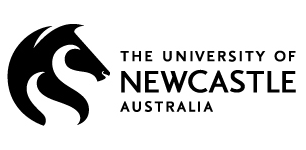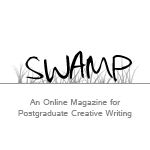Walking with Ellarni
Zela Bissett (University of the Sunshine Coast, Australia)
The head ranger was a fit-looking, cheerful fellow with a neatly trimmed white beard. He took our money for the park entrance, looked speculatively at my companion and me and asked, “Are you going on any of the longer walks?”
“Only one,” I replied.
“Well, here’s some advice from me. Take more food and water than you think you’ll need, warmer clothes and a waterproof jacket.”
I must have looked worried, because then he added, “We have a really good safety record here. Just don’t forget to sign the book, say where you’re going and let us know your expected time of return.”
The boat dropped us off at the rustic wooden jetty and set off, arrows of white bubbles marking its retreat. Already I was entranced. This was the ancient myrtle forest: mossy, gnarled and damp. We climbed the slope and found a tiny dark hut with a small stash of firewood, next to a branching path. A couple with two small daughters had alighted with us. They were dressed in light summer clothes and appeared to be carrying very little. They stopped for a picnic while my companion and I set off through the forest.
We walked, savouring the smells and sights of the great wilderness. The air was cool and the forest quiet. As we went on, the path became more and more boggy. Soon we were wading through mud, climbing fallen logs, with glimpses of the lake, peeping through the craggy myrtles, encouraging us on. At half way, we sat down on the trunk of a fallen forest giant to eat our sandwiches. I saw the family in the distance. The father was carrying the younger child, but the older girl walked on gamely.
“I don’t know how they’re going to go with such young children,” I said to my companion.
“They’ll probably get the boat back from the next stop-off,” he replied reassuringly.
As we neared the last stage of the journey, I came upon the sign. A modest rectangle of weathered wood, it told me, near here, over one hundred years ago, a small band of Aboriginal survivors had finally surrendered their freedom after years of running and hiding. I read, then re-read, the small testament which unsentimentally recounted their number and circumstances. Abruptly, after my long day of exertion amid glory, I glimpsed their life: their privations, their vigilance, their unstinting pursuit of survival. Not just physical survival, but that of their way of life and knowledge. Among them were five children. I knew that many adults would have given their meagre portions, made shelters, shared skills, songs and stories, had carried and protected. That image of that small band of a dozen starving people that put me in mind of Mary Gilmore’s words, ‘…harried we were, and spent.’
As I stood in front of the sign, my companion came up. He scanned the sign, pulled out our map and checked it. We were still a long way from the camp and it was beginning to grow shady under the trees.
Then, I felt her gently accost me, the eldest of the five. A long-limbed girl, just entering puberty.
She urged me to breathe, to stand tall. I straightened my shoulders. She showed me how to walk for a long journey. Under her guidance, I swung my legs from the hips, found how to balance my weight on the uneven ground, how to harness other muscle groups in order to spare my tired legs. I adjusted my pack. I began to visualise the way ahead, not only from the map, but as if I had walked it before, with campfires burning along the lake’s shores.
I gave her the name Ellarni. We walked together economically and almost joyfully. My exhaustion had abated. My footsore companion commented, “You’re setting a cracking pace.” Finally, in the fading light, there was a picnic table I recognised. I knew it was a manageable distance back to the camp and which track to take. I stopped, leaned on the picnic table and stretched the way I would after a gym workout. Then I resumed with Ellarni’s ground-covering walk. She gently let me go.
Much later, as we were cupping our hands around a hot drink in the visitors’ centre, I was relieved to see the family with the two daughters arrive. Outside the sky was almost completely dark. The younger child was still in her father’s arms, as they pressed up to the counter for hot drinks. The elder girl, a slender blonde of about eight years, stood back and looked at me with recognition. I smiled as I realised that we both seemed similarly muddy, tired and exultant.
“We nearly got lost,” she confided quietly. “A boy showed me the way back.”
“Well you made it.” I smiled again.
She did not smile. “My mum and dad couldn’t see him. It was pretty dark and he was black.”
She looked around and her gaze glanced over my companion, then back to me, asking, “Where’s the girl that was with you?”
What could I say? “She’s already gone home,” I replied.
“Oh,” she nodded acceptingly, and went to get the hot chocolate her mother was offering. She drank silently, looking across several tables at me with wise, innocent eyes. We both knew truths that would not be spoken to others. I did not tell the Head Ranger I knew the secret of the park’s impressive safety record. I did not tell my companion about my gentle guide.
But whenever I walk Country, I walk with Ellarni still.
Zela Bissett grew up under another name during the 1950s and 60s on Butchulla Country in Maryborough and Hervey Bay. Her family were somewhat bemused by her inclination towards the visual and word arts, but through the intervention of her “Uncle” Gough and others she was able to attend university, become a teacher and foster similar leanings in other unlikely young people. She makes art works, writes poetry, prose, plays and polemic, occasionally published. She regularly deconstructs her life via speeches for her Toastmasters club, shows work in art galleries and other locations, and as a speaker has taken part in panel discussions, spoken word performances and pecha kucha evenings.






